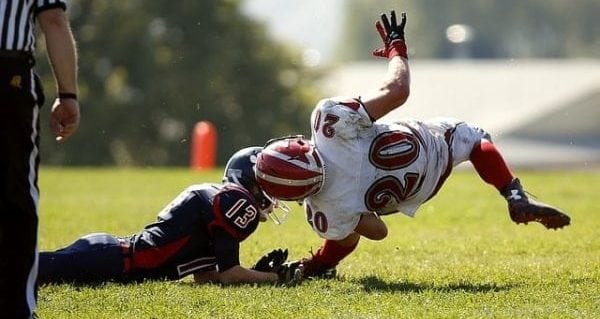 Most people associate chronic traumatic encephalopathy (CTE), a progressive brain disease caused by repetitive brain trauma, with professional football – specifically retired Canadian Football League and National Football League players.
Most people associate chronic traumatic encephalopathy (CTE), a progressive brain disease caused by repetitive brain trauma, with professional football – specifically retired Canadian Football League and National Football League players.
But CTE is more than a pro football issue. While the Boston University CTE Center has discovered CTE in the brains of 110 of 111 former NFL players, it has also found CTE in the brains of 48 of 53 former college players. Those college players didn’t go on to play pro football.
Moreover, 21 per cent of the 14 brains of former high school football players studied at the centre had evidence of CTE. And those players never played football beyond high school.
Admittedly, those are pretty small sample sizes (brains can only be examined for CTE after death) but the percentages are still quite scary.
Some of the cases of CTE in college and high school players were considered “mild.” But even mild cases of CTE had some serious clinical symptoms that worsened over time. For example, 67 per cent had depression symptoms and 52 per cent had anxiety symptoms. In addition, 89 per cent had impulsivity tendencies, 69 per cent felt hopelessness, 67 per cent had an explosive temper, 67 per cent had substance use disorders and 52 per cent were physically violent. And those were considered the mild CTE cases.
The most common cause of death of those with mild CTE was suicide.
“The studies are significant for those who have been playing football and contact sports for years at the collegiate and professional level,” said Jim Chesnutt, MD, an associate professor of orthopaedics, rehabilitation and sports medicine at Oregon Health and Science University. “We are not yet sure if this applies to younger contact sport athletes, but we certainly would like to limit the number of head blows and injuries in athletes of all ages.”
Unquestionably, we must find ways to limit blows to the head in football. But here’s the elephant-in-the-room question: Should youth and high school athletes even be playing football, since repetitive brain trauma is inherent in the sport? And unlike pro players, the brains of high school and college players are still in the developmental stage.
“Is it worth the risk now, however slight, that less severe but still substantial damage could be occurring to high school and college students whose brains haven’t even finished developing yet?” asks Tara Haelle, a writer for Forbes magazine in an article on the risks of football for high school and college athletes.
Before answering that question, consider this finding: Purdue University researchers have compared changes in the brains of high school football players who had suffered concussions with the brains of high school football players who were concussion free and found brain tissue damage in both. That’s scary. That means brain injuries are occurring without players, coaches or parents being aware of it.
When it comes to football and CTE issue, avoidance behaviour is a big problem. It’s time we all stare the issue in the face and have a collective discussion about it.
Ken Reed is sports policy director for League of Fans (leagueoffans.org), a sports reform project. He is the author of Ego vs. Soul in Sports and How We Can Save Sports: A Game Plan.
The views, opinions and positions expressed by columnists and contributors are the author’s alone. They do not inherently or expressly reflect the views, opinions and/or positions of our publication.
